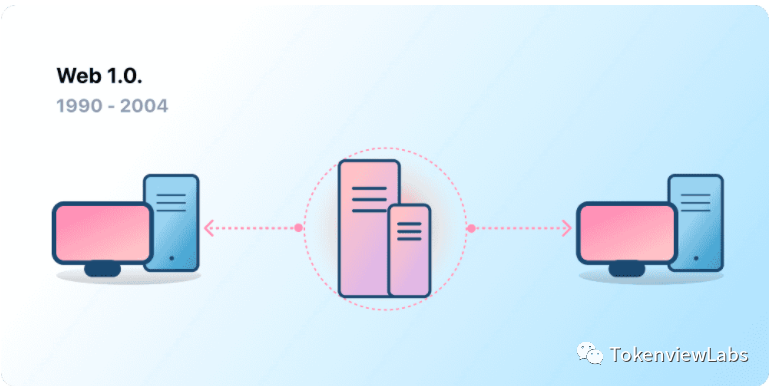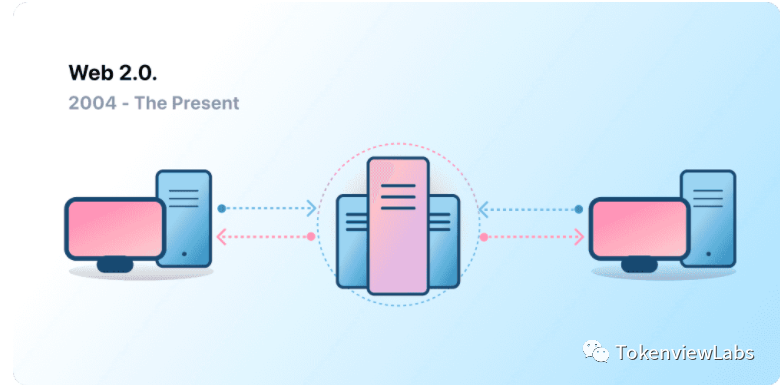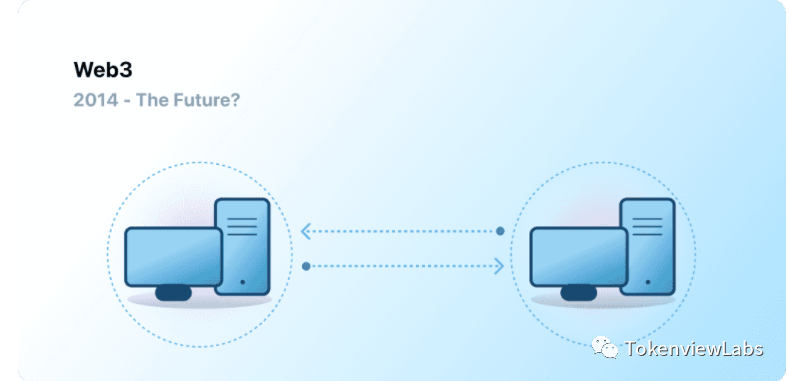When people talk about Web3, what are they talking about? Web3
Web3
Centralization has helped billions of people use the internet and created a stable, robust infrastructure. At the same time, a handful of centralized entities hold strongholds over large swaths of the internet, unilaterally deciding what should and should not be allowed.
Web3 is the answer to this dilemma. Unlike the Internet, which is monopolized by large technology companies, Web3 embraces decentralization and is built, operated and owned by its users. Web3 puts the power in the hands of individuals, not companies. Before we discuss Web3, let's explore how we got here.
Early Internet
Most people think of the internet as an ongoing pillar of modern life—it was invented and has been around ever since. However, the Internet as most of us know it today is very different from what was originally imagined. To better understand this, it's necessary to divide the short history of the Internet into two loose periods - web 1.0 and web 2.0.
Web 1.0: Read-Only (1990-2004)
In 1989, at CERN in Geneva, Tim Berners-Lee was busy developing the protocols that would become the Internet. His idea? Create open, decentralized protocols that allow information sharing anywhere on the planet.
The first emergence of the Internet, now known as 'Web 1.0', occurred roughly between 1990 and 2004. The Internet in the Web 1.0 era was largely static websites owned by companies with little interaction between users—individuals rarely produced content—leading to it being called a read-only web.

Web 2.0: Read-Write (2004-Now)
In 2004, with the emergence of social media platforms, the Web 2.0 era began. The network is not read-only, it is readable and writable. Instead of providing content to users, companies began to provide platforms to share user-generated content and engage in user-to-user interactions. As more and more people come online, a handful of top companies come to control a disproportionate amount of the traffic and value on the web. Web 2.0 also gave rise to advertising-driven revenue models. While users can create content, they do not own it or benefit from its monetization.

Web 3.0: Read-Write-Own
The premise of 'Web 3.0' was coined by Ethereum co-founder Gavin Wood shortly after Ethereum launched in 2014. Gavin proposed a solution to a problem felt by many early cryptocurrency adopters: the internet requires too much trust. That is, most of the Internet as we know and use it today relies on trusting a handful of private companies to act in the best interest of the public.

What is Web3?
Web3 has become a catch-all term that represents a vision of a new, better Internet. At its core, Web3 uses blockchain, cryptocurrencies, and NFTs to give power back to users in the form of ownership.
A 2020 Twitter post said it best: Web1 is read-only, Web2 is read-write, and Web3 will be read-write-own.
Core ideas of Web3
Although providing a strict definition for Web3 is challenging, there are some core principles that guide its creation.
- Web3 is decentralized: instead of large swathes of the internet being controlled and owned by centralized entities, ownership is distributed among its builders and users.
- Web3 is permissionless: everyone can participate in Web3 equally and no one is excluded.
- Web3 has native payments: it uses cryptocurrencies for online spending and transfers, rather than relying on outdated bank and payment provider infrastructure.
- Web3 is trustless: it operates using incentives and economic mechanisms rather than relying on trusted third parties.
Why is Web3 important?
Ownership
Web3 lets you own your digital assets like never before. For example, let's say you are playing a web2 game. If you purchase an in-game item, it will be tied directly to your account. If the game developer deletes your account, you will lose these items. Or, if you stop playing the game, you lose the value of your investment in game items.
Web3 allows direct ownership through NFTs. No one, not even the creators of the game, has the power to take ownership away from you. If you stop playing the game, you can sell or trade in-game items on the open market to recoup their value.
Censorship resistance
The power dynamic between platforms and content creators is wildly unbalanced. In Web3, the data is on the blockchain. When you decide to leave a platform, you can take your reputation with you and plug it into another interface that better aligns with your values. Web 2.0 requires content creators to trust that the platform will not change the rules, but resistance to censorship is inherent to Web3 platforms.
Identity
Traditionally, you would create an account for each platform you use. For example, you might have a Twitter account, a YouTube account, and a Reddit account. Want to change your display name or avatar? You must do this for each account. In some cases, you can use social login, but this brings with it a familiar problem: censorship. With just one click, these platforms can lock you out of your entire online life. To make matters worse, many platforms require you to trust them with your personally identifiable information to create an account.
Web3 solves these problems by allowing you to control your digital identity using Ethereum addresses and ENS files. Using Ethereum addresses provides secure, censorship-resistant, and anonymous cross-platform single sign-on.
Native payments
Web2's payments infrastructure relies on banks and payment processors, excluding those who don't have bank accounts or happen to live in the wrong country. Web3 uses tokens like ETH to transfer money directly in the browser, without the need for a trusted third party.
Web3 limitations
Although Web3 in its current form has many benefits, there are still many limitations for the ecosystem to allow it to thrive.
Accessibility
Important Web3 features, such as logging in with Ethereum, are already available to anyone at zero cost. However, the relative cost of trading remains prohibitive for many. Web3 is unlikely to be used in less affluent developing countries due to high transaction fees. In Ethereum, these challenges are being addressed through network upgrades and Layer 2 scaling solutions. The technology is mature, but we need a higher level of adoption at Layer 2 to make Web3 accessible to everyone.
User experience
The current technical threshold for using Web3 is too high. Users must understand security issues, understand complex technical documentation, and navigate unintuitive user interfaces. Wallet providers, in particular, are working hard to solve this problem, but more progress is needed before Web3 can be widely adopted.
Education
Web3 introduces new paradigms that require learning a different mental model than Web2.0. In the late 1990s, with the popularity of Web 1.0, a similar educational movement took place; proponents of the World Wide Web used a large number of educational techniques to educate the public, ranging from simple metaphors (information highways, browsers, Internet Surf) to the television broadcast. Web3 is not difficult, but it is different. Educational campaigns to educate Web2 users about these Web3 paradigms are critical.
Centralized infrastructure
The Web3 ecosystem is still young and growing rapidly. Therefore, it currently relies mainly on centralized infrastructure (GitHub, Twitter, Discord, etc.). Many Web3 companies are rushing to fill these gaps, but building high-quality, reliable infrastructure takes time.
Decentralized future
Gavin Wood coined the term Web3 in 2014, but many of the ideas have only recently become a reality. In the last year alone, there has been a huge increase in interest in cryptocurrencies, improvements in Layer 2 scaling solutions, large-scale experimentation with new forms of governance, and the digital identity revolution. We're only at the beginning of creating a better Internet with Web3, but as we continue to improve the infrastructure that supports it, the future of the Internet looks bright.

 APIs
APIs


 Back
Back


